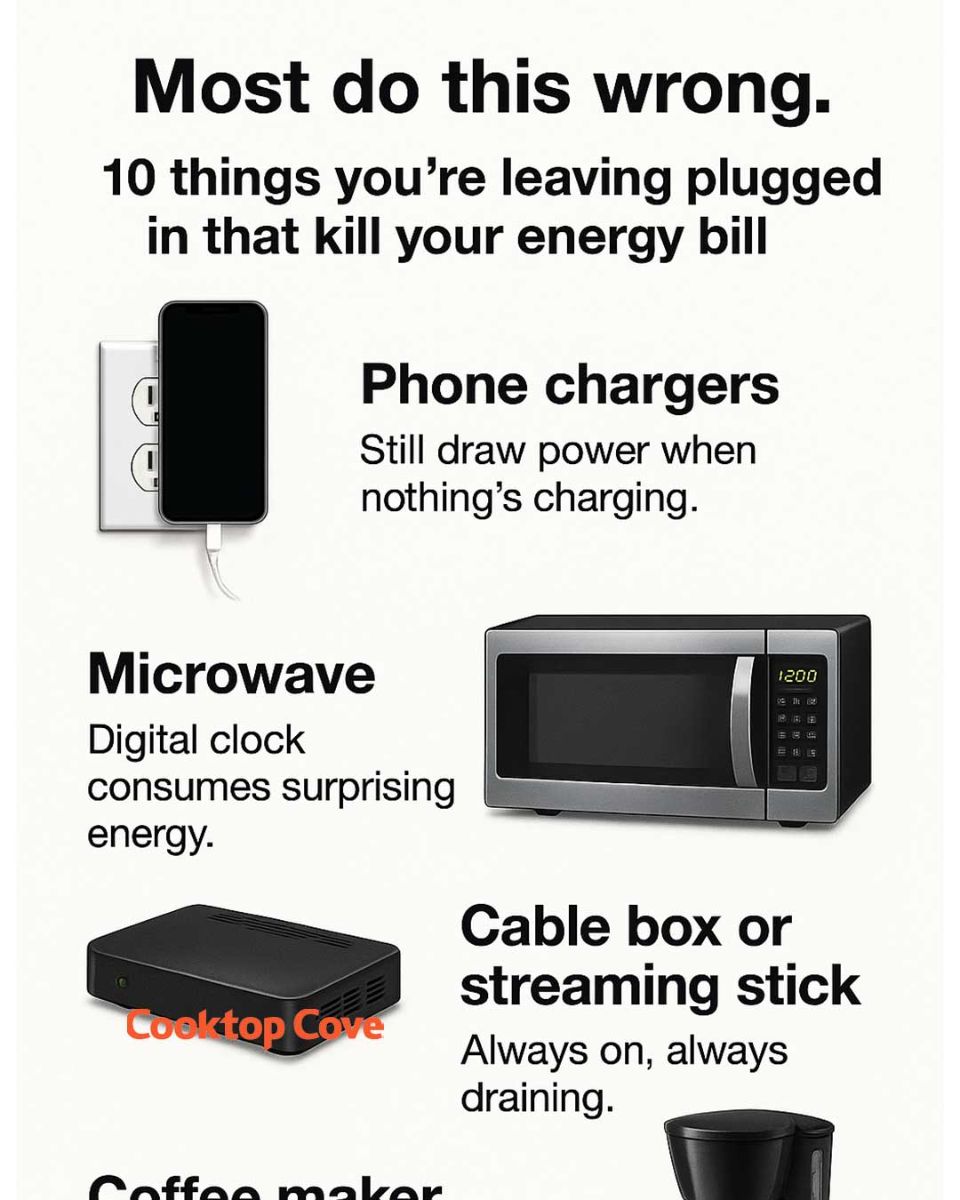In today’s modern world, our homes are filled with electronic devices that make life more convenient and enjoyable. However, many of these devices continue to draw power even when they’re not in use, contributing to higher energy bills. This phenomenon, known as ‘phantom load’ or ‘vampire power,’ can account for up to 10% of your home’s energy consumption. By identifying and unplugging these energy vampires, you can significantly reduce your electricity costs and contribute to a more sustainable environment.
In this article, we’ll explore ten common household items that are often left plugged in, silently draining power and inflating your energy bill. From phone chargers to Wi-Fi routers, these devices may seem innocuous, but their cumulative impact can be substantial. Read on to discover how you can save money and energy by simply unplugging these devices when they’re not in use.
1. The Hidden Cost of Phone Chargers
Phone chargers are one of the most common culprits of phantom energy consumption. Even when your phone is not connected, a charger left plugged into the wall continues to draw a small amount of electricity. This might seem negligible, but when multiplied by the number of chargers in a household and the number of hours they’re left plugged in, the cost adds up. On average, a single charger can consume 0.26 watts per hour when not in use. While this might only cost a few dollars per year per charger, it’s an unnecessary expense that can be easily avoided by unplugging chargers when they’re not in use.
2. Microwaves: More Than Just a Cooking Tool
Microwaves are essential kitchen appliances, but they also consume energy even when not actively heating food. The digital clock and display on a microwave can use up to 3 watts continuously. Over the course of a year, this can add up to around 26 kilowatt-hours, costing you a few extra dollars annually. While this might not seem like much, it’s a cost that can be eliminated by simply unplugging the microwave when it’s not in use, especially if you don’t rely on its clock.
Best restaurants near me
3. Cable Boxes and Streaming Sticks: Silent Energy Vampires
Cable boxes and streaming devices are notorious for their energy consumption, even when turned off. A typical cable box can use up to 30 watts while in standby mode, which can translate to over 250 kilowatt-hours per year. Streaming sticks, while more energy-efficient, still consume power when not in use. To minimize their impact, consider using a power strip to easily disconnect these devices when they’re not needed, or invest in a smart power strip that can automatically cut power to these devices when your TV is turned off.
4. Coffee Makers: Brewing Up Your Energy Bill
Coffee makers, particularly those with clocks or timers, can be another source of phantom energy usage. When left plugged in, they can draw between 1 to 5 watts continuously. This standby power can add up over time, costing you a few extra dollars each year. To reduce this unnecessary expense, unplug your coffee maker when it’s not in use, or consider models with energy-saving features that minimize standby power consumption.
5. The Standby Power of Televisions
